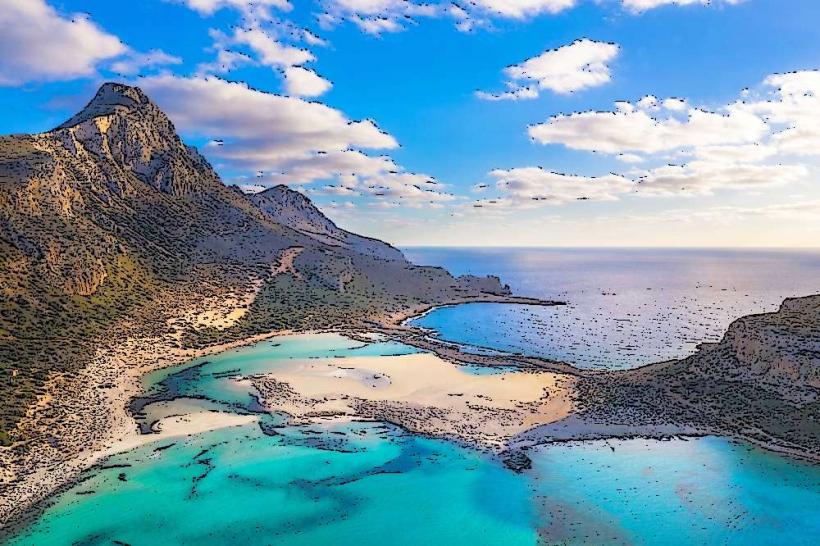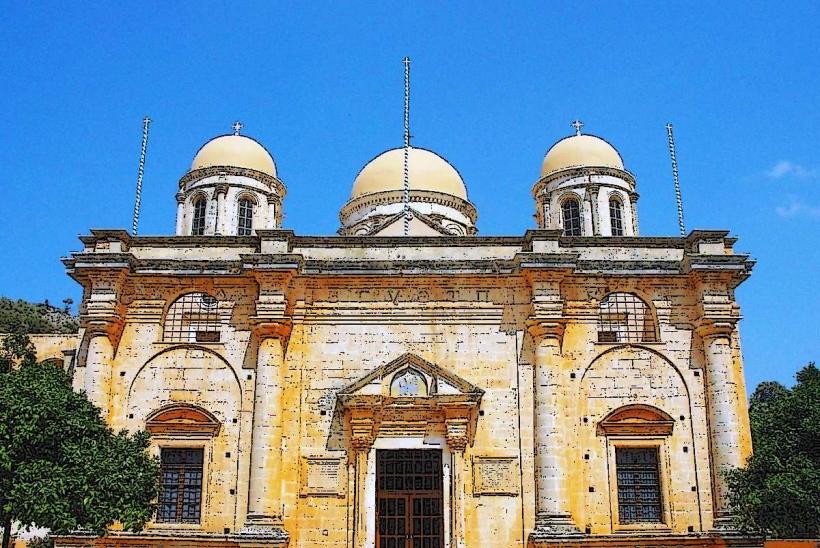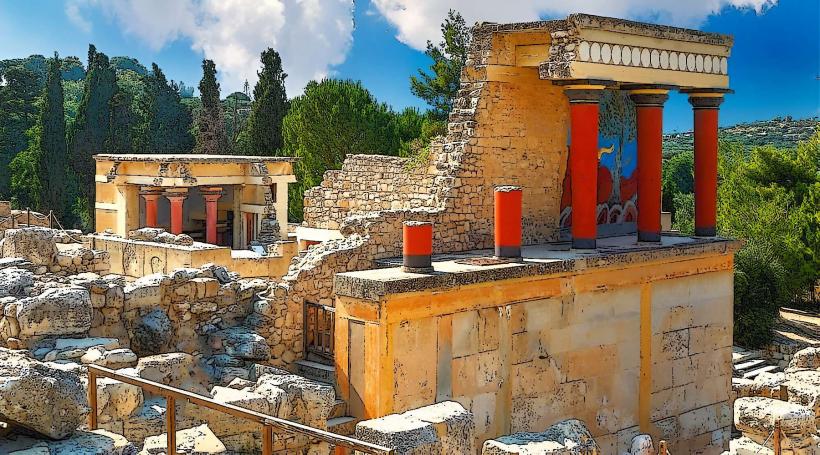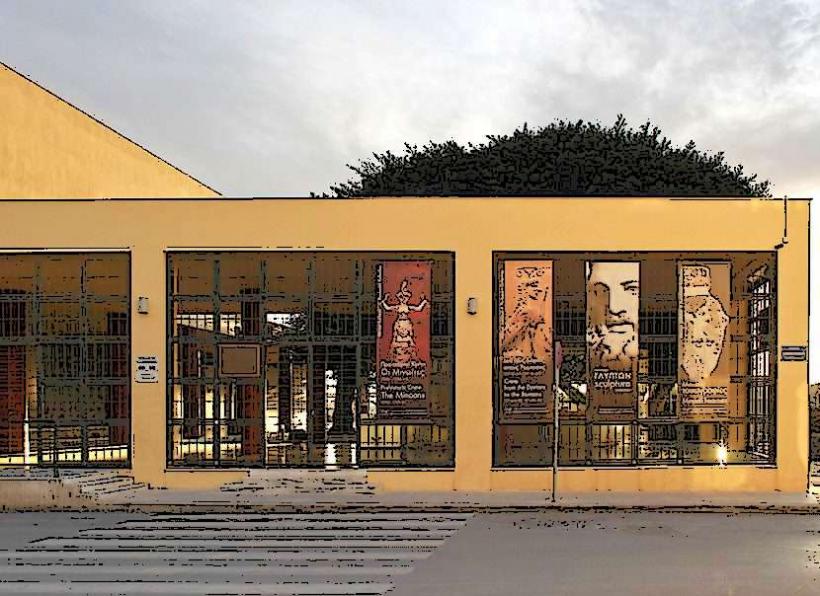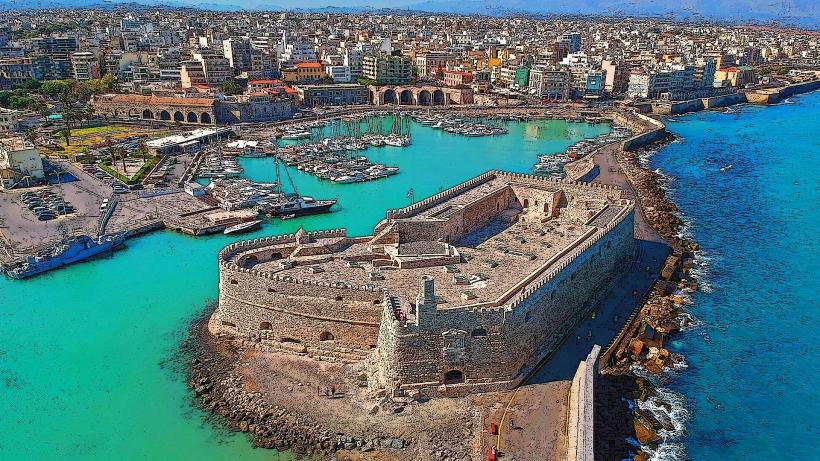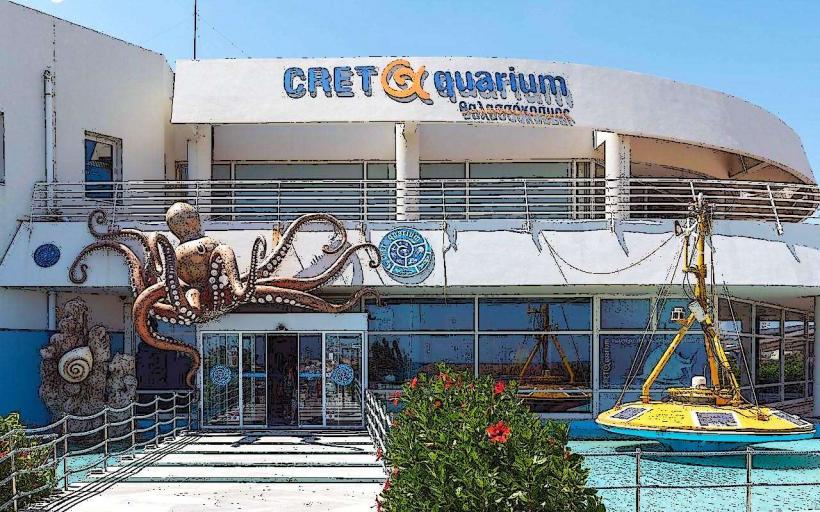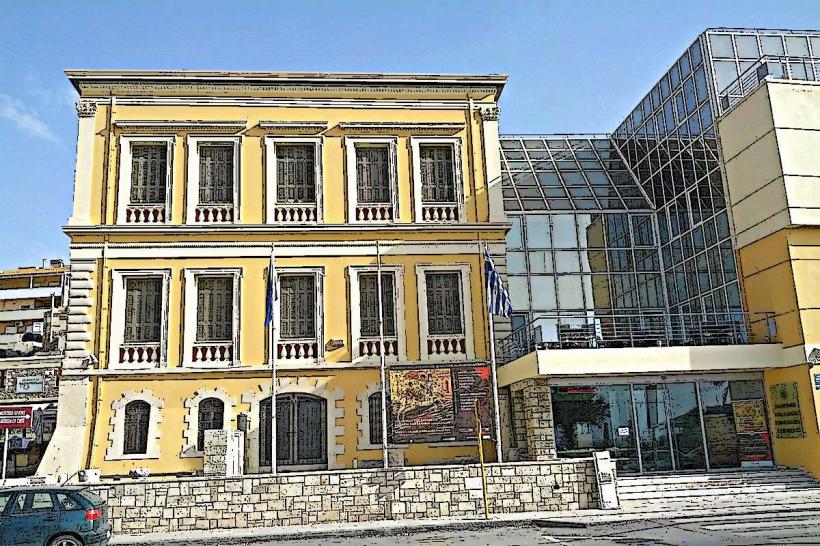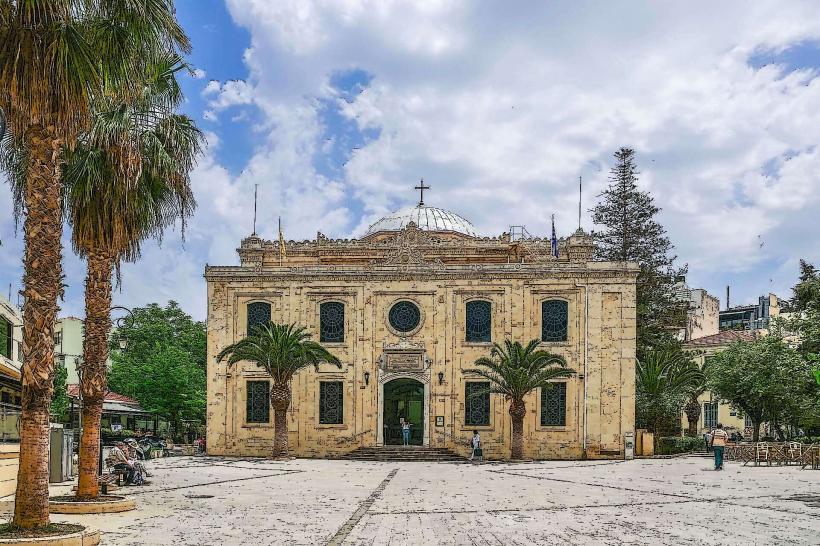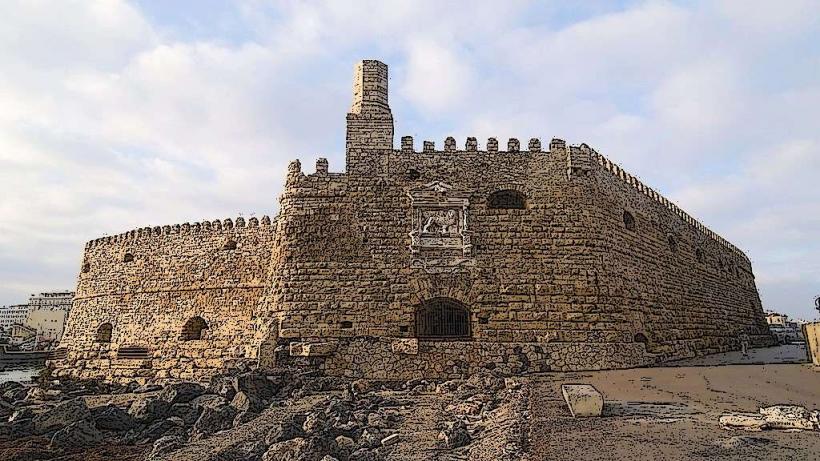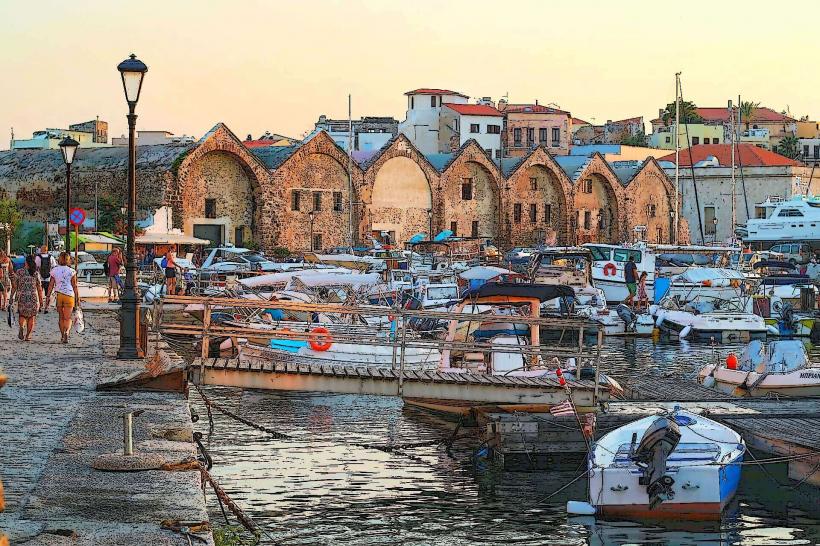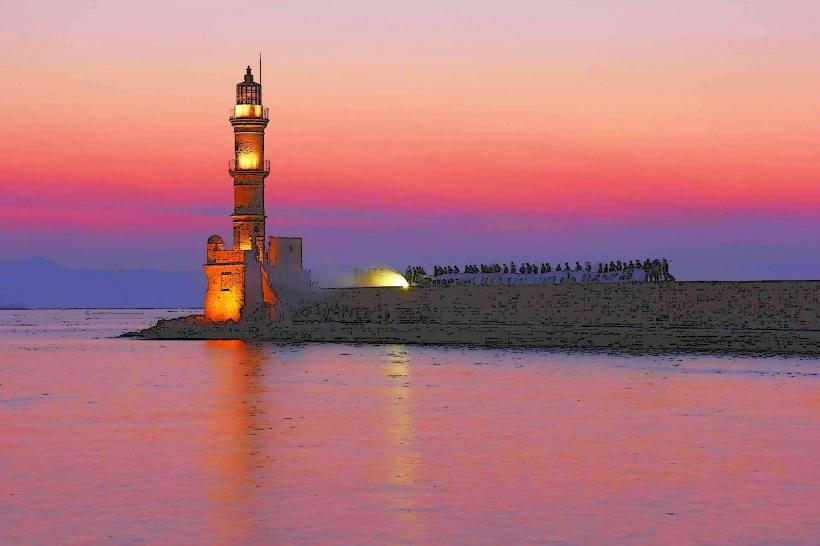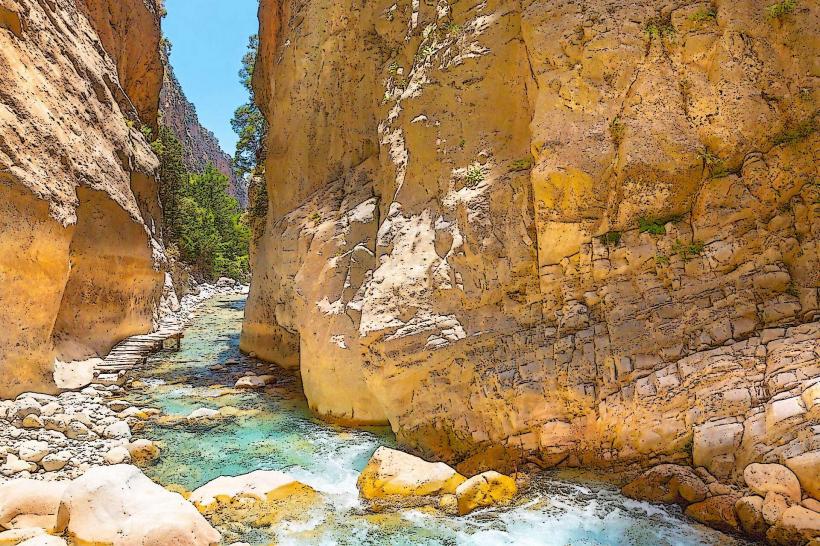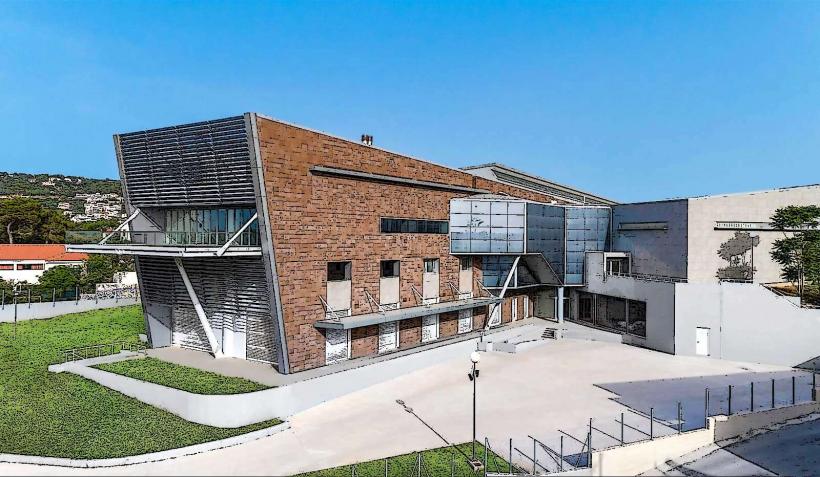Information
Landmark: Morosini FountainCity: Crete
Country: Greece
Continent: Europe
The Morosini Fountain (also known as the Lions Fountain) is one of the most famous landmarks in Heraklion, Crete. It is an elegant and historically significant fountain located in Plaza Morosini, also known as Lion Square. This iconic structure is a testament to the Venetian influence on the island of Crete and is a must-see attraction for visitors to Heraklion.
Overview:
Location: The Morosini Fountain is located in the heart of Heraklion, in Lion Square (Plaza Morosini). It is a central meeting point in the city and one of the most photographed spots. The fountain is surrounded by cafes and shops, making it a popular gathering place for locals and tourists alike.
History: The fountain was constructed in the 17th century during the period of Venetian rule on Crete. It was commissioned by Francesco Morosini, the Venetian Procurator (or governor) of the city, after whom it is named. Morosini played a significant role in the administration of the Venetian colony and sought to improve the city's infrastructure, including the construction of this fountain to provide fresh water to the inhabitants of Heraklion.
Architecture and Design:
Structure: The Morosini Fountain is a baroque-style fountain with a circular basin that is centered around four lion heads, from which water flows. The fountain is made of stone, with intricate carvings and decorative elements that reflect the Venetian style of architecture prevalent at the time.
Lions: The fountain’s most distinctive feature is the four lion heads, which spout water into the basin below. The lions are sculpted in a way that gives them a majestic and powerful appearance, symbolizing strength and authority. These lions have become one of the most iconic symbols of Heraklion.
Tiers: The fountain has a three-tier design, with each tier decorated with sculpted reliefs of animals, figures, and ornamental designs. The uppermost tier features a large central spout, while the lower two tiers are adorned with the lion heads. The fountain's overall design is meant to create an elegant and inviting focal point in the square.
Water Supply: The Morosini Fountain was historically supplied with water from the Koules Fortress, which was connected to a network of pipes. The water that flowed through the fountain was a critical source of fresh water for the residents of Heraklion, especially during the hot summer months.
Historical Significance:
Venetian Influence: The fountain is a clear example of the Venetian influence on Heraklion during the period of Venetian rule (1204–1669). During this time, the Venetians worked to modernize and beautify the city, and the Morosini Fountain is one of the best-preserved examples of their efforts.
Symbol of Prosperity: The fountain was not only a practical water source but also a symbol of the prosperity and cultural heritage of Venetian-ruled Crete. The fountain represented the Venetian commitment to improving the quality of life for the people of Heraklion while enhancing the city's aesthetic appeal.
Ottoman Period: After the Venetians left Crete, the Ottomans took control of the island in the late 17th century. Despite the changes in control, the Morosini Fountain remained an important part of Heraklion’s public life. During the Ottoman period, the fountain continued to be used by the locals for drinking water and as a landmark in the city's bustling center.
Restoration and Modern-Day:
Renovations: Over the years, the fountain has undergone several restorations to preserve its historical features and maintain its structural integrity. The most recent restoration was completed in the 20th century, ensuring the fountain continues to be a central and iconic landmark in Heraklion.
Symbol of Heraklion: Today, the Morosini Fountain is a beloved symbol of Heraklion and a popular tourist destination. It is especially busy in the warmer months, as visitors and locals gather around the fountain to admire its beauty, take photographs, or relax in the nearby cafes and restaurants.
Cultural Importance: The fountain also serves as a gathering place for cultural events, festivals, and celebrations in the city. It is a hub of activity and remains a focal point for life in Heraklion.
Visitor Experience:
Attraction: The fountain is free to visit and can be admired from all angles. The square surrounding the fountain has many cafes and shops, making it an ideal spot to relax and enjoy the atmosphere of the city.
Accessibility: The Morosini Fountain is located in a pedestrianized area, so it is easily accessible on foot. It is in close proximity to other major landmarks in Heraklion, such as the Heraklion Archaeological Museum, making it easy to visit as part of a walking tour of the city.
Conclusion:
The Morosini Fountain, or Lions Fountain, is a quintessential landmark in Heraklion, offering a glimpse into the city's rich Venetian past. With its impressive architecture, historical significance, and striking lion sculptures, it stands as a symbol of the island's cultural heritage and its enduring charm. It is a must-see site for anyone visiting the city, providing a peaceful spot to enjoy the beauty of Heraklion while reflecting on the island’s complex history.

